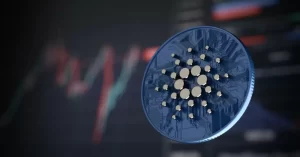
The IoT assures developments in smart manufacturing, with which smart factory revolution comes into the scenario. The sensors as well as other IoT things placed in the factory can work independently to navigate the production in the manufacturing industry with minimum human intervention. These sensors are now able to recognize faults on the basis of the data gathered by them and autonomously take the decision to remove the faulty equipment, which we also called predictive maintenance. The IoT is an ideal technology for improving the level of industrial automation in today’s factories.
Most of the industrial automation systems in factories today will endure vendor support. By updating their systems with IoT systems, they can expand both the functionality as well as the lifespan of these systems.
IoT has moved a step ahead to assure that the sensors responsible for analyzing the working of the equipment and sharing data to cloud-based storage systems are also able to start or stop the operation of machines autonomously if the necessity arises. For instance, if a company has placed a vibration sensor on a machine, it will recognize vibrations and share the data with the cloud for further processing.
Almost 67 % of companies in the industrial manufacturing sector already have an existing smart factory system. To build a smart factory, IoT solutions are required. Connected IoT devices likewise cameras for machine vision and sensors are required throughout a manufacturing facility to inspect the status, collect data, monitor it and utilize insights to optimize operations. Additionally to data-collecting devices, even so, the software collects IoT data and enables users to analyze and control all features of automated production. The hIOTron’s Platform implements IoT smart factory solutions to pave the way for enhanced productivity and improved supervision in the era of Industry 4.0.
Most of IoT’s value will likely come from its capability to optimize several operations. But IoT has the potential to entirely transform every aspect of product development and delivery, from the plant floor to the value chain:
- Machine sensors enable factories to calculate and minimize energy and water waste, leading to lower costs and environmentally feasible operations.
- Manufacturers can feed data from other systems and devices instantly back into the production line, allowing them to make improvements in days or even hours.
- Greater asset tracking and sensor-based alerts trigger orders when stock runs low, enabling manufacturers to entirely automate the inventory replenishment process.
- Manufacturers can automatically recognize potential equipment failures before they occur, protecting employees and reducing unplanned downtime.
Source: https://www.hiotron.com/how-to-automate-factory-with-iot-solution/
- All
- Allowing
- asset
- Automated
- Automation
- build
- cameras
- Cloud
- company
- Costs
- data
- delivery
- Development
- Devices
- employees
- energy
- equipment
- Expand
- Facility
- factory
- Features
- How
- How To
- HTTPS
- industrial
- industrial automation
- industry
- insights
- inventory
- iot
- iot devices
- IT
- leading
- Level
- Line
- machine vision
- Machines
- manufacturing
- Manufacturing sector
- Operations
- orders
- Other
- platform
- Product
- product development
- Production
- productivity
- sensors
- Share
- smart
- So
- Software
- Solutions
- start
- Status
- stock
- storage
- support
- system
- Systems
- Technology
- Tracking
- users
- value
- vision
- Water
- Work


